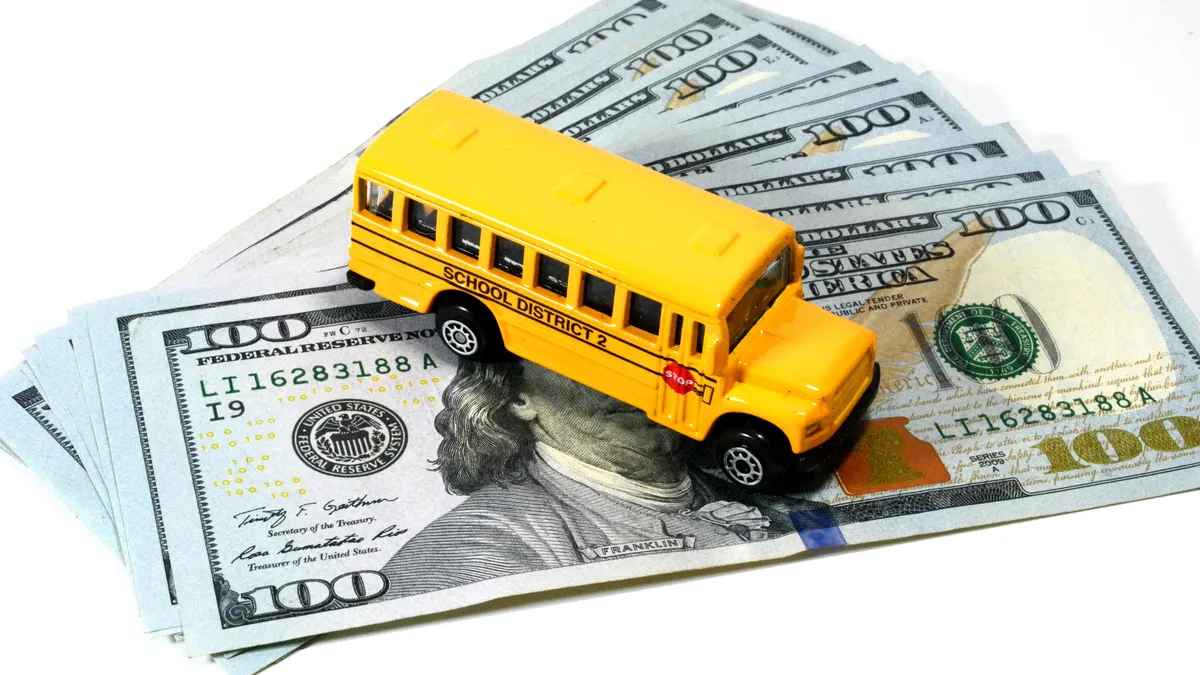Dive Brief:
-
Public school districts will face constrained operating budgets as pandemic relief ends, staffing surpasses pre-pandemic levels, and enrollment declines deepen due to falling birthrates and school choice expansion — all while state funding is "getting less generous," according to a Moody's report released Tuesday.
-
School districts' resilience will depend partly on how they generate revenue. Districts that rely heavily on state budgets will weather the storm better if they have regular, predictable operating budget increases, while those that rely mostly on local property taxes will be constrained by levy or millage rates.
-
Districts that have added to their financial reserves will have more running room. While districts' median reserves are higher than prior to the pandemic, some districts' reserves have stagnated or begun to decline, the report said.
Dive Insight:
Public school districts' available operating funds peaked in fiscal 2022, were flat in fiscal 2023, and are expected to remain flat or to decline slightly in fiscal 2024, according to Moody’s. By fiscal 2025, median fund balances are likely to dip but still remain above pre-pandemic levels.
Moody's Ratings is a financial services company that provides insight on financial trends in education and other sectors.
Amid these budget changes, districts will find themselves needing to cut programs to keep up, the report said, echoing warnings from other education finance experts.
However, programs that have drawn strong political and community support will be difficult to cut. For example, programs that improved — or were perceived to improve — student outcomes will be difficult to put on the chopping block.
In the face of growing costs, school districts are turning to partnerships with career and technical education centers and community colleges as a way to improve student and operational outcomes, a separate Moody's report also released this week found. This trend will likely continue, it said.
The Moody's reports come as districts are finalizing and announcing their budgets for the upcoming school year.
In the 2021-22 school year, the National Center for Education Statistics found that total yearly spending for public K-12 schools rose nearly 2%, while state revenues dropped by 2.6% and local revenues fell 2% between fiscal years 2021 and 2022. Federal funding filled much of that gap , jumping by 32% between those two fiscal years due to federal pandemic aid.
Those funds, Moody's said, created a favorable operating environment for districts.
However, for many leaders, this year may be the first they face making significant K-12 cuts in their careers. It's possible that tight budgets ease up beginning in the 2025-26 school year, Marguerite Roza, director of Georgetown University's Edunomics Lab, said in April.














